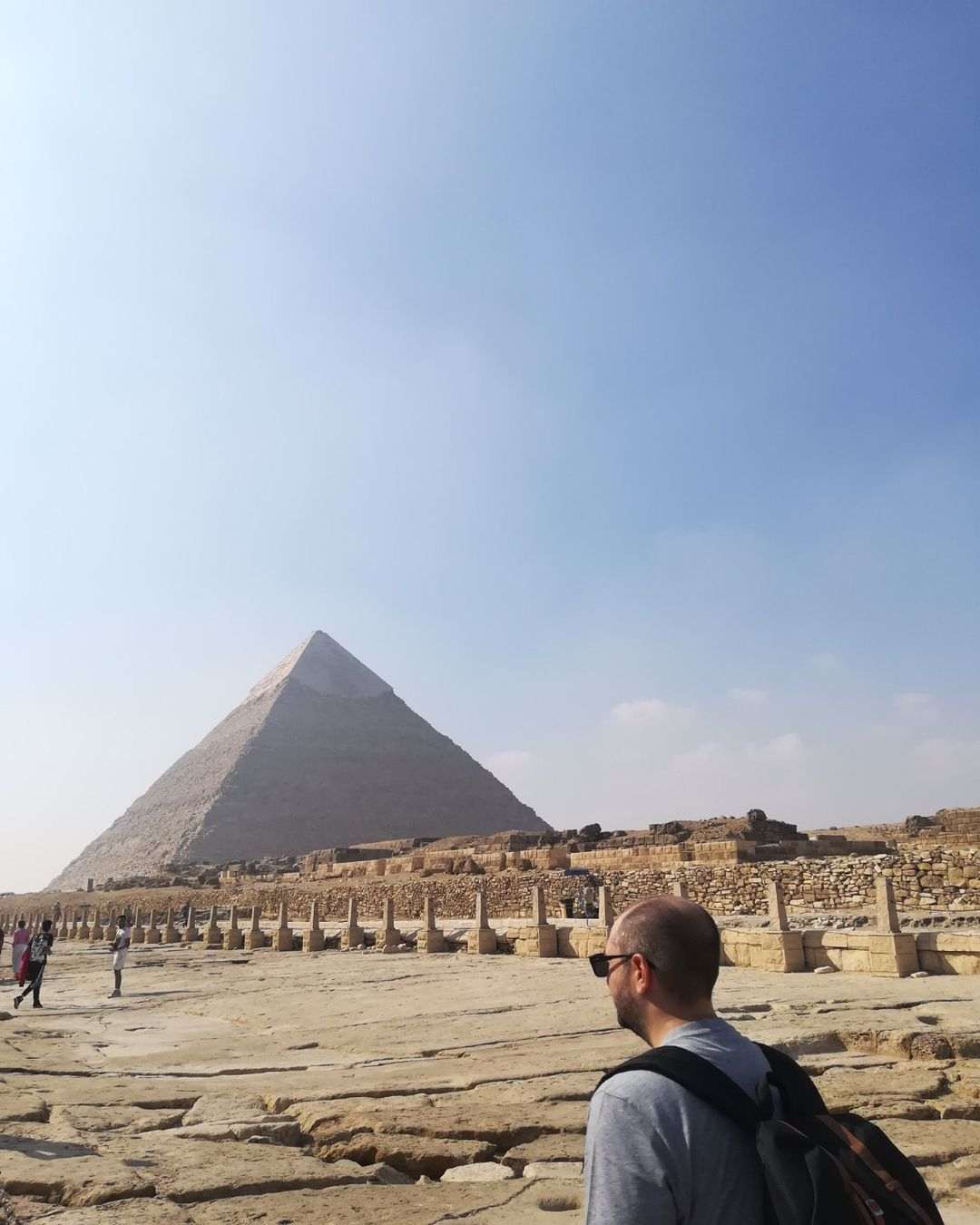Thessaloniki is the town where "O Thessalonikios" was born and obviously the starting point of all my travels. The truth is, I'm not completely objective when referring to my city, as my love for it is boundless, which makes me not imagine myself staying away from it (at least not for long).
Thessaloniki is the town where "O Thessalonikios" was born and obviously the starting point of all my travels. The truth is, I'm not completely objective when referring to my city, as my love for it is boundless, which makes me not imagine myself staying away from it (at least not for long). The most romantic city in Greece, the nymph of Thermaikos Gulf, the only co-capital in the world, the city that discovered the frappe coffee and the bagel. It is the aura that this city exudes, that once you set foot in it, you will automatically be in love with it forever. It is a place that combines, in perfect harmony, so many things, capable of delighting even the most skeptical traveler. Historical monuments, romantic walks, good food, but also wild clubbing, rank Thessaloniki among the most charming cities in Southern Europe.
A few words about the city
Thessaloniki is the largest metropolis in Macedonia in terms of area and population in northern Greece and the second largest in the country, after the capital Athens. The population of the town is estimated at 788,191 inhabitants and 1,012,013 in the wider metropolitan area. It was founded in 316-5 BC from the Macedonian general Kassandros, who gave it the name of his wife and half-sister of Alexander the Great, Thessaloniki and came from the union of 26 cities, which were located around the Thermaikos Gulf. In the 2nd century BC the city was conquered by the Romans and became the seat of the Roman province of Macedonia. Because of its strategic location, the city was chosen as the imperial capital during the reign of Galerius, who constructed an imperial palace in Thessaloniki. After the completion of the Egnatia road (120 BC), Thessaloniki, which was the most populous city of the network with international influence, became the most significant hub between the East and the West. After the division of the Roman Empire, it was one of the candidate capitals of the Eastern Roman Empire, with Byzantium finally chosen. Despite not being chosen as the capital, it acquired the title of "co-reigning" city, by which it was known during the Byzantine period. After its conquest by the Ottomans in 1432, it remained in the Ottoman Empire for about five centuries. After the expulsion of the Jews mainly from the Iberian Peninsula in 1492 with the issuance of the Alhambra decree, but also from Northern Europe, Thessaloniki became their destination, thus acquiring its own Jewish community. The settlement of Jews in Thessaloniki promoted the city as the world's most important Jewish metropolis until at least the beginning of the 20th century. With its inclusion in the body of the Greek State in 1912, the population of the city showed significant changes, such as with the Asia Minor Catastrophe and the settlement of Greek Asia Minor refugees and subsequently - during the Population Exchange - with the removal of the Muslim population and its replacement from refugee populations of Asia Minor, Eastern Thrace and Pontus. Underneath I have selected for you, what I believe someone visiting Thessaloniki for the first time should see and do.
10) Entertainment
One of the main characteristics of Thessaloniki, as I mentioned above, is its intense nightlife. There are plenty of options for all tastes, sure to not let anyone leave town without having a good time. If you are looking for something traditional, like good food, tsipouro and accompanied by music, then you should try Athonos Square or Ladadika. There are dozens of small taverns there, which will compensate you to the fullest. In Ladadika you can also find some of the most famous club-bars of the city, where they close in the early hours of the morning. The hangouts that are mostly frequented by students are Bit Bazaar and Rotonda. Spots buzzing with life seven days a week, with outrageously low prices and high levels of fun. If you want to have a "relaxed" drink, then I recommend heading to Valaoritou or Karolou Dil streets, while if you want wild clubbing, head to the port district. Finally, if you are a "bouzouki" fan then you should check out the airport area and the "Sfageia".
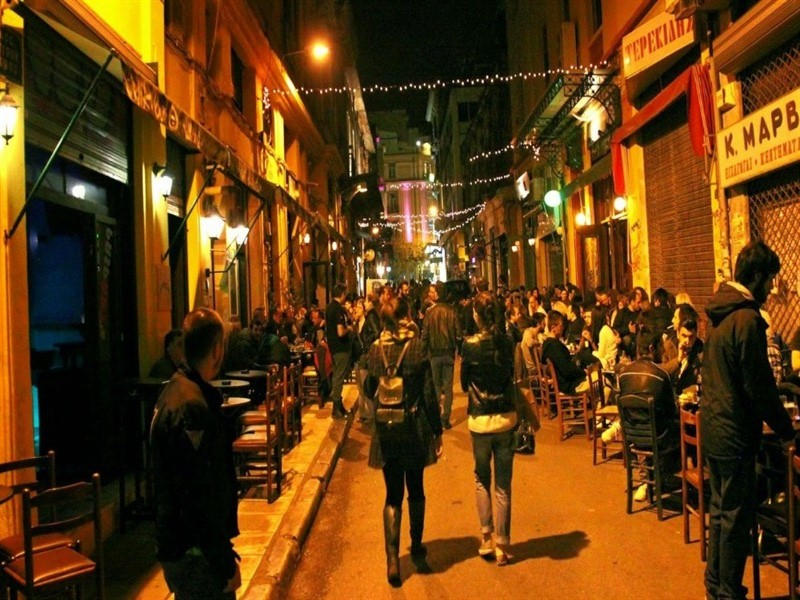
9) The Churches
As a Byzantine city and cradle of Christianity, Thessaloniki has dozens of churches worth visiting. Agia Sophia in the city center is one of the most important early Christian Byzantine churches of Thessaloniki. It is a very beautiful Basilica with a dome, which incorporates an imposing architecture, while its interior is dominated by beautiful frescoes and elaborate mosaics. With more than 16 centuries of history behind it, we can easily understand why it is considered one of the most important religious sites in the whole of Macedonia. The earliest written reference to the building dates back to 795 AD. While we can safely assume based on archaeological evidence that an earlier Christian temple existed at the same site, at least until the devastating earthquake of 620 AD. Agia Sophia is one of the numerous monuments of Thessaloniki, which were included in the Unesco World Heritage List in 1988.
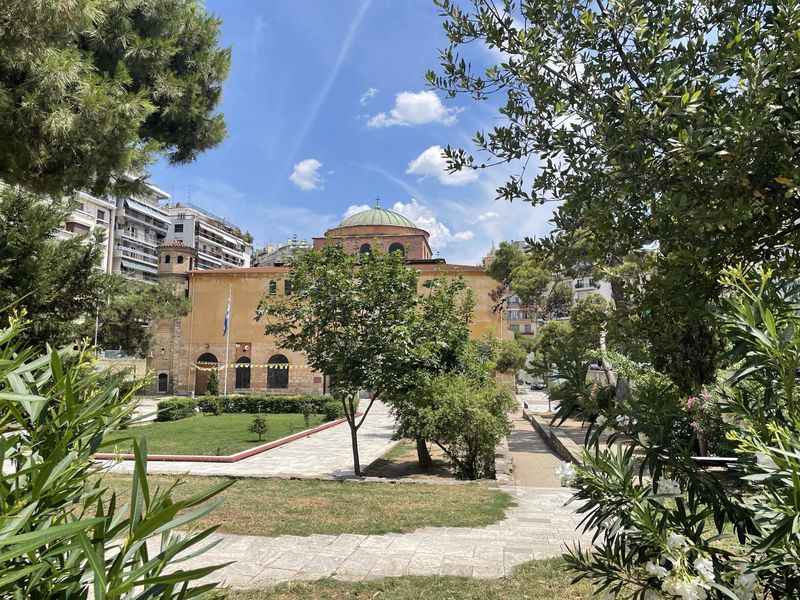
For the majority of the inhabitants of Thessaloniki, the Church of Saint Demetrius is undoubtedly the most important old-Christian Church of the city for religious, artistic and historical reasons. Dedicated to the Saint and protector of the town, the church has a long and rich history behind it, which is essentially identified with the history of the city as it was shaped by the rich events that marked it. It is an excellent example of temple building and religious architecture of the last years of the early Byzantine period. (7th century AD). The first rafts and the interior decoration of the church lost their original form after a series of reconstructions, additions and disasters that occurred over the centuries. The initial construction of the Church of St. Demetrius dates back to the 4th century AD, when a small Christian temple was constructed over the ruins of the most ancient Roman Baths, which were located on the same site. A little more than a century later, this original construction was replaced by a three – aisled church, and on the initiative of the Byzantine eparch of Illyricum Leontios, while the final and most important configuration was made in 629-634 AD, as a five-aisled Basilica with a transept. During the Ottoman period the temple was converted into a mosque after the conquest of Thessaloniki by them, led by Murad II. A sufficient number of mosaics and frescoes were destroyed.
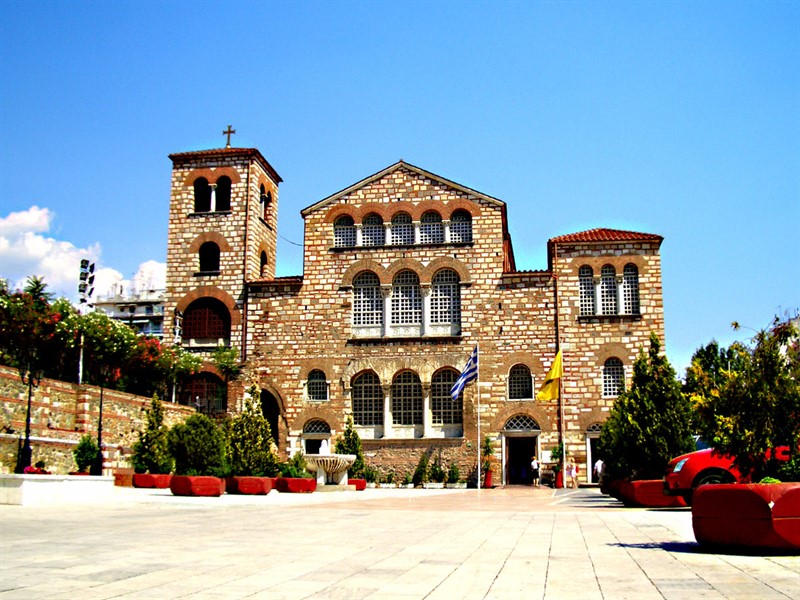
The Church of Panagia Acheiropoietou and the Church of Panagia Chalkeon also deserve special mention. The first one is located on Agia Sofia Street, above Egnatia and is one of the oldest Byzantine sights of the city! It owes its name to a miraculous icon of the Virgin Mary that was kept inside, while its foundation is placed in the period 450-475 AD! On the other hand, Panagia Chalkeon is located in the upper part of Aristotelous Square and according to an inscription on the west entrance, it was erected in 1028! The plan of the church is that of the classical inscribed cruciform trulean temple, which dominated the architecture at the time of the Macedonian dynasty. With four columns supporting the central dome and a separate tripartite space with two pillars for the sanctuary, the temple is, in particular, part of the complex variant of the above type, which was widespread in Constantinople.
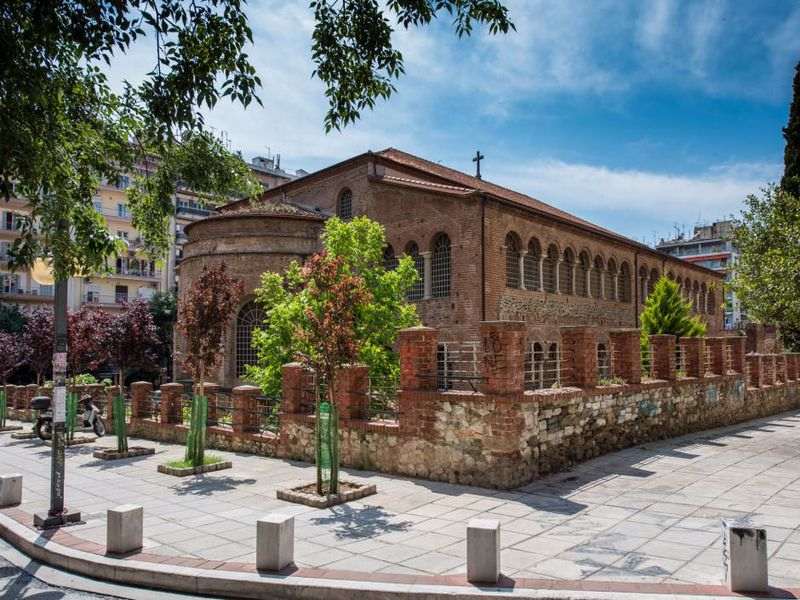
Last but certainly not least, I left the Rotonda (Saint George). Built in 306 AD by the Romans and the emperor Galerius, the Rotonda is one of the oldest, historical buildings of the city with a strong religious character. Its history takes us many centuries back. During the 3rd century AD after a series of bloody and devastating civil wars, it was decided to divide the empire into 4 self-governing regions, each with its own provinces. This move essentially led to a new form of political government called the tetrarchy. The administrative needs of the modern system led Galerius to order the construction of an extensive palace complex in Thessaloniki, as it was one of the most important administrative and economic centers and one of the main cities of the provinces that he ruled as one of the 4 men who held power. The Triumphal Arch (Kamara) and Rotonda were two of the main elements of the palatial complex. The primary intention was to use the building as a mausoleum, but many archaeologists disagree, believing that the Rotonda was originally intended as a Roman temple. The dimensions of the main building are impressive.
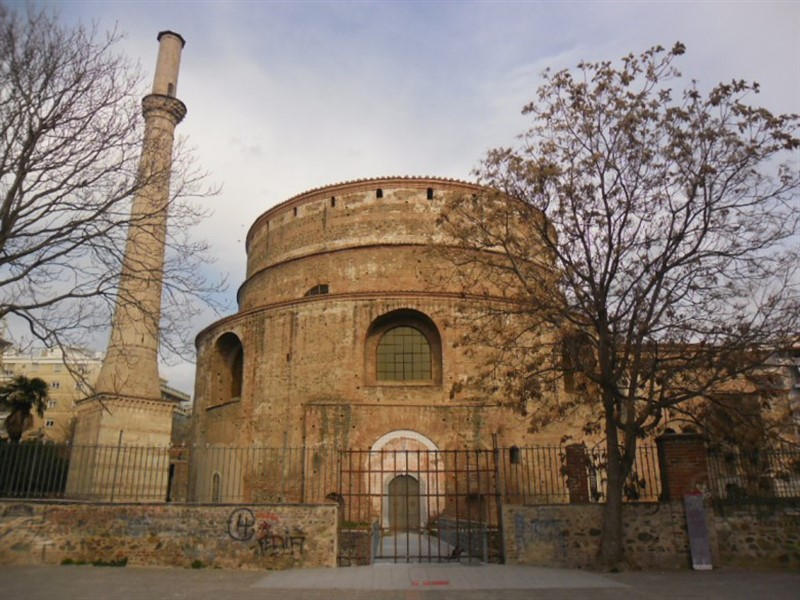
8) The Museums
Thessaloniki has many interesting museums, some of which are among the most important in Greece. The first I recommend to visit is the Archaeological Museum. It is located in the city center, behind the Thessaloniki International Fair and is easily accessible on foot as a bus. Its collections include finds from the area of Thessaloniki, but also from the wider northern Greece. The eight permanent exhibition units (Memory and Stones, prehistoric Macedonia, towards the genesis of cities, in the Kingdom of Macedonia, Thessaloniki, Macedonia Metropolis, the Gold of the Macedonians, Agros House Garden Place and Macedonia and from the Tesserae in pixels) structured thematically, cover all aspects of the private and public life of antiquity. The renovated building has complete systems of special conditions of air conditioning and constant temperature in the exhibitions, in the warehouses and in the completely modernized laboratories, as well as a renewed retraining program, which made the Thessaloniki Archaeological Museum one of the most modern and equipped museums in Greece. The museum is open daily from 8:30-16:00 and the ticket costs 4e.
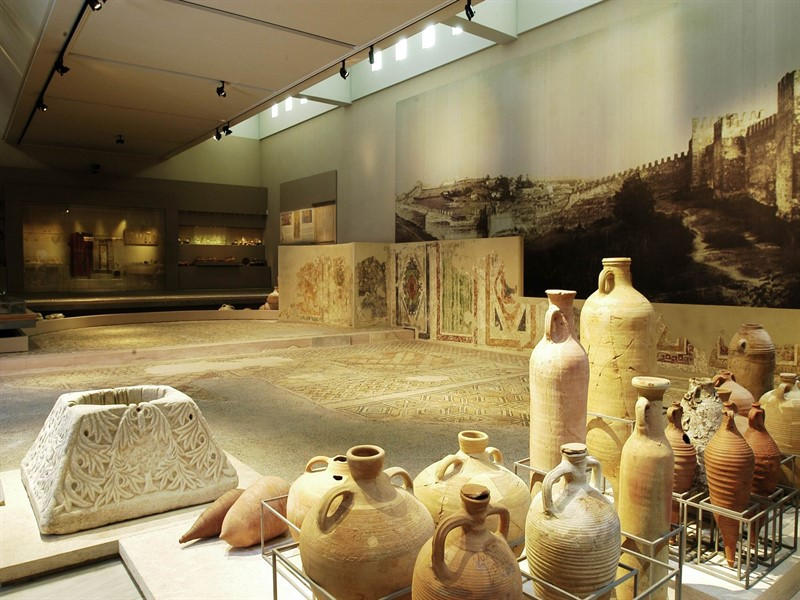
The second museum that I think is worth seeing is that of Byzantine Culture. For many it is perhaps the most important of the city's museums, as Thessaloniki has undoubtedly the most intense Byzantine character. It has many unique exhibits and several collections that are considered very rare and will impress you! Wonderful mosaics and colorful frescoes, Byzantine icons and religious architecture, impressive jewelry, rare books and codes await you! At regular intervals, many temporary exhibitions and collections from abroad are hosted in collaboration with various museums from all over the world. It is considered one of the best architectural designs in Greece for public building, as it perfectly combines the Greek architectural heritage by intelligently using modern elements and building materials. The Museum of Byzantine culture was awarded the European Museum Award in 2005. A beautiful restaurant, a small amphitheater, as well as a separate part of the museum that hosts temporary exhibitions are some of the additional and available features to visitors making the whole experience even more pleasant. And this museum is open daily, but from 8:00-15:00, and the ticket also costs 4e.
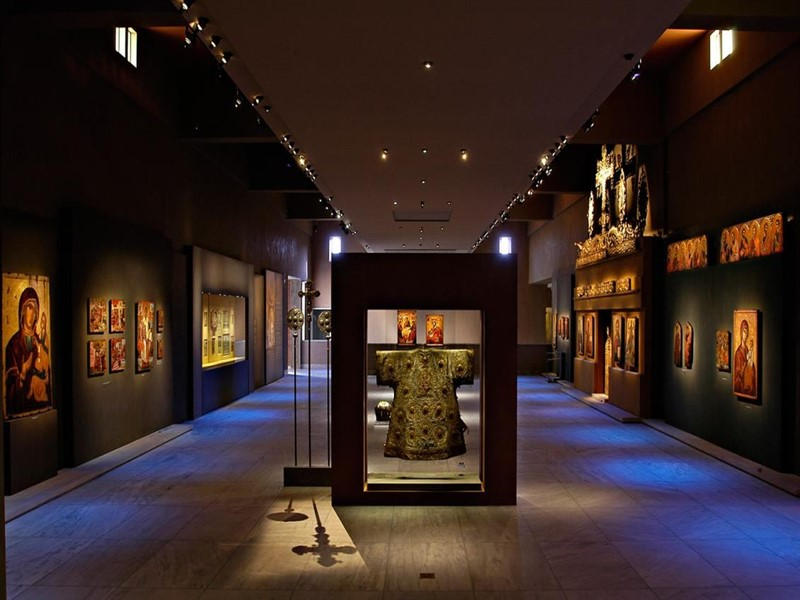
7) Upper Town
In the northern part of Thessaloniki, we find the Upper Town or Old Town, the only area that was virtually untouched by the great fire of 1917. The Upper Town will make you feel that time has stopped. The special architectural style will take you back to the Byzantine era. Due to its location, it was moreover the main fortress of the city with defensive structures (Eptapyrgio, Trigoni Tower), which were created during the Byzantine and Ottoman Periods. A large part of the Byzantine Walls that surrounded Thessaloniki have been preserved and are now a jewel of the Acropolis of Thessaloniki. The Upper Town can be visited on foot if you like walking or by bus (No. 22 and No. 23). Stroll through the cobbled streets surrounded by small beautiful Ottoman architecture houses and enjoy the stunning panoramic view of the city and the sea, especially during the sunset hours. Do not neglect to have lunch or dinner in the small taverns with traditional cuisine offered at reasonable prices. Some of them such as "Tsinari" and "Inglis" are more than a century old! You can also find souvenirs in small tourist shops in the area, near Portara and Trigonio Tower. Looking a little more closely at the Byzantine walls you can distinguish the limits of the ancient city due to the fortification which survives in several parts of the town. Finally, take some time to visit the old Byzantine church of St. Nicholas and the Monastery of Vlatades, which were built in the 14th century AD. They are among the oldest and most interesting buildings that can be found in the Upper Town.
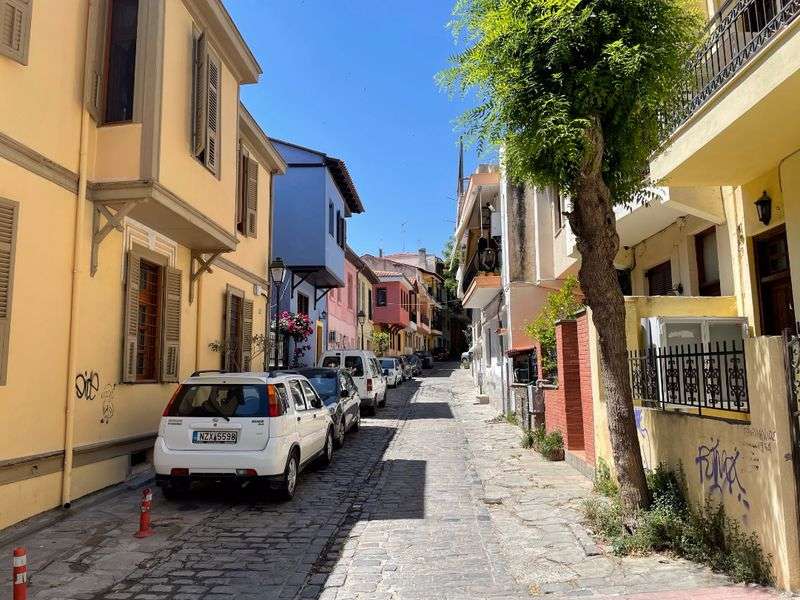
6) Kamara
The Arch of Galerius also known as "Kamara" is one of the most recognizable and distinguished Roman monuments of Thessaloniki and the meeting place for locals and tourists. It is a triumphal monument, which gathers many interesting elements of Roman monumental architecture and was dedicated to the victorious campaign of Emperor Galerius against the Sassanids of Persia and the capture of their capital Ctesiphon in 298 AD. Having many of the distinctive features of the buildings of monumental character of the 4th century AD, features magnificent marble reliefs elaborately carved depicting a multitude of representations and individuals having a strong narrative and decorative character. The sculptural decoration pleasantly impresses the visitor even today, while the abundant representations can be distinguished and studied with quite a lot of ease. As the purpose of the whole project was to emphasize the triumph of Rome itself, it is not surprising that at the center of the scenes are the emperor and his exploits, as well as the imperial family. Around the Arch you will find many cafes and fast food shops, while right opposite begins Navarino square. The square dates from the Roman period of the city, with evident witnesses to the ruins of the palace of Galerius located within it. Right next to it is the "Hippodrome Square", where the massacre of Thessaloniki took place during the reign of Theodosius I. Today Navarino Square is a popular meeting place, mainly among the student population of the city.
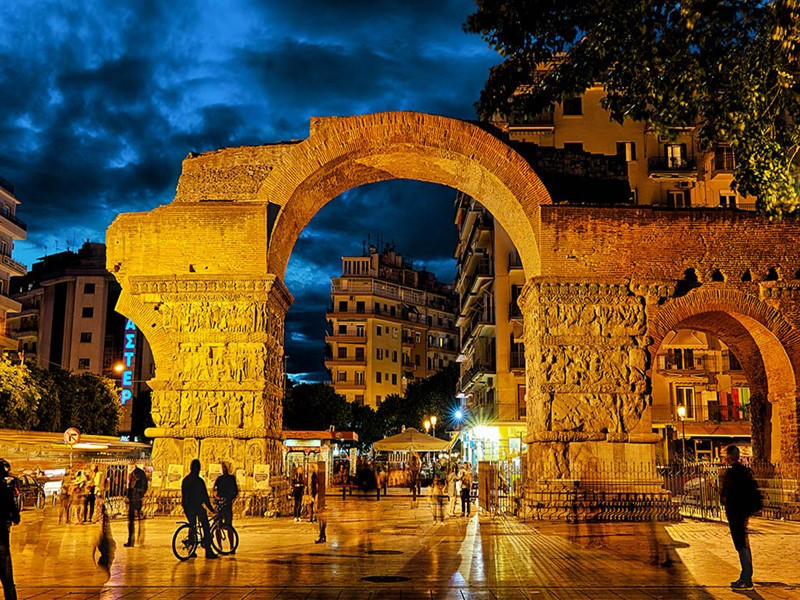
5) Ladadika
Leaving Aristotelous Square and following the most commercial street of Thessaloniki, Tsimiski Avenue, you will meet the well-known Ladadika. It is a lovely historical area, specially designed for pedestrians only, which is a favorite destination for both locals and visitors of the city. Ladadika is one of the hottest spots in the town in terms of entertainment, with the student community of the city giving "thunderous" present daily! They are essentially a mixture of the old with the new, of tradition with the present. The colorful historical and neoclassical listed buildings exude the spirit and character of old Thessaloniki and the countless clubs, bars and restaurants the liveliness of today. The name "Ladadika" comes from the shops that existed in the area much earlier and sold food, oil and various oil products. The whole area was used as a central market and Bazaar during the Ottoman rule, and was also known by additional names such as "Egyptian market". It hosted many shops and merchants with a variety of products, but after the destructive fire of 1917 it began to decline gradually, with the result that after a few decades only the shops that supplied oil were left in it. By the mid-70s the area was almost abandoned, when in 1985 it was declared listed, thus prohibiting its further reconstruction, in order to preserve its unique architectural heritage and character. After that, Ladadika soon came back to life, when many small taverns, bars and restaurants opened occupying the once abandoned buildings that today have in their vast majority been wonderfully restored and preserved.
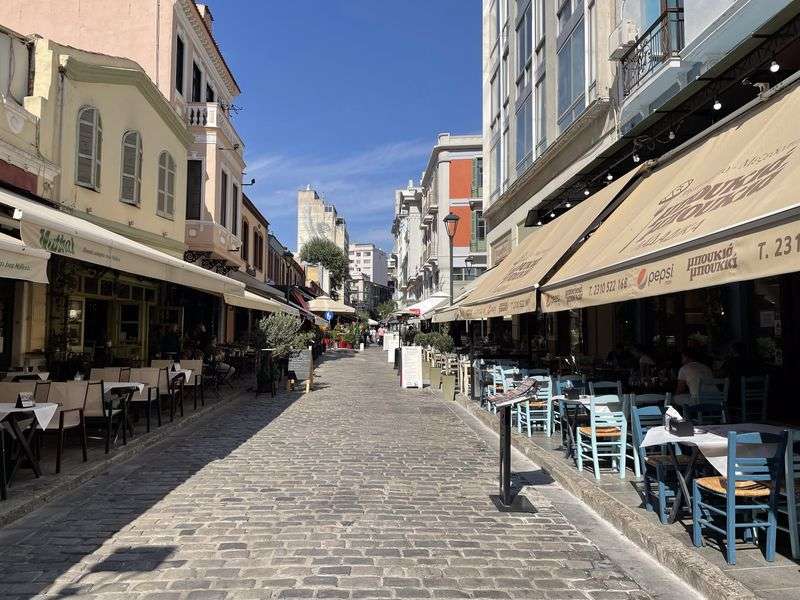
4) Aristotelous Square
If we were seeking the heart of the city, it would be Aristotelous Square without a second thought. Going back in time, after the fire of 1917, the reconstruction of the city was entrusted to the "International Committee for the new plan of Thessaloniki", headed by the French architect Ernesto Ebrar. Ebrar envisioned a monumental axis that would start from the southern part of the square, in front of the sea and reach Venizelos Square and the Roman Agora. It was inspired by Western architecture, European, colonial, Arab and Neo-Byzantine models in order to emphasize the city's relationship with the Byzantine Empire. In addition, a statue of Alexander the Great would also be placed in the center of the square; however, the architect's first plans for the square were greatly simplified. Instead of the original elaborately designed facades, the final facades built during the 1950s, due to the economic hardship of that period, were much simpler. The hotel "Electra Palace" and opposite it, the "Olympion", the "twins" and certainly more recognizable buildings of the square were built in the 50s and 60s respectively, while many other structures around the central square over time were damaged and have been renovated. The twelve buildings that make up Aristotelous Square have been listed since 1950. Today in the square are bookstores, several radio stations, public services, many shops, restaurants, bars, banks, jewelers etc. In its center stands the statue of the great ancient philosopher Aristotle, while in the northern part of the square there is the statue of Eleftherios Venizelos. At the height of Ermou Street, you will find the old Jewish markets of the city, still bustling with life, tradition and energy, the Modiano and Kapani markets, just a breath away from the cobbled streets of Ladadika.
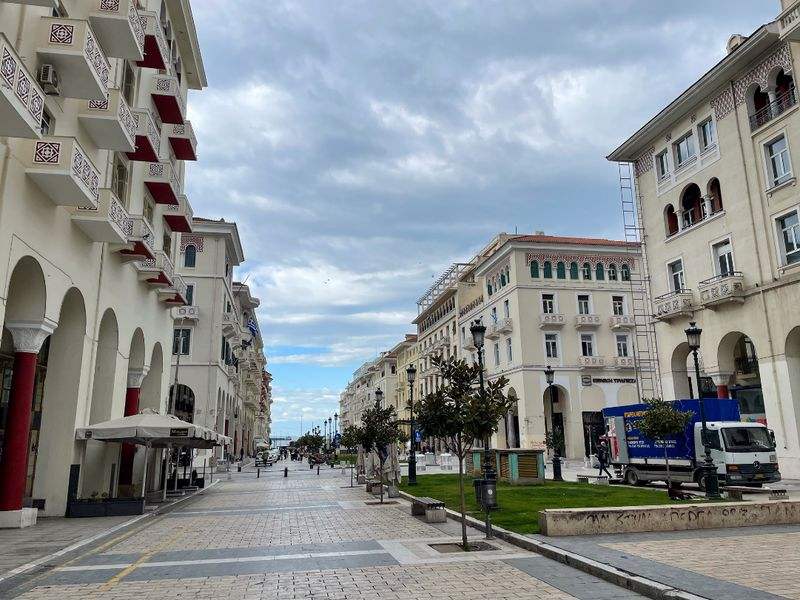
3) Old Beach
The new beach starts from the Concert Hall and ends at the White Tower, from there begin the Victory Avenue (Leoforos Nikis) or as it used to be called the "Old Beach". This street is one of the most elegant and sensual streets of the city, and its history begin only 146 years ago. It was created in 1873 after the demolition of the south wall of the city and its original name was Beyaz Kule Avenue (of the White Tower), while after the liberation the name was Hellenized and became that of the White Tower. This day, Victory Avenue is lined with the most expensive high-rise buildings in Thessaloniki, while the ground floors still house a few designer clothing stores, good restaurants and... more than 30 cafes! At the end of the avenue is the port, where the cruise ships dock. In the summer months you will find many young people sitting on the benches to while away the weather gazing at the idyllic setting, accompanied by coffee or beer.
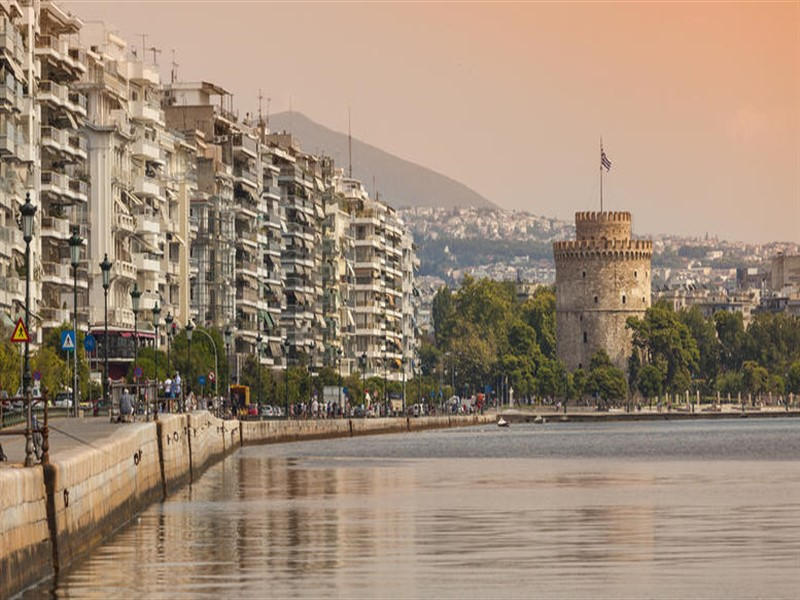
2) New Beach
Although it took a long time to be done, the new beach of Thessaloniki is one of the most idyllic spots in the whole of Macedonia. It has 3.5 kilometers of exploited and reconstructed coastal front, the largest in Greece, which starts from the White Tower and ends at the Concert Hall. This spot is a destination for walkers who want to enjoy the sun, the sea and the sky of Thessaloniki, but also those who want to run or cycle in the city center. Along the new beach you will discover several things that deserve attention, as well as many green spaces.
The first thematic area we meet starting from the White Tower is the garden of Alexander the Great. It is essentially a place with a lot of greenery, fountains and, of course, the impressive statue of Alexander the Great riding Bucephalus. The statue has a height of 11 meters, was erected in 1973 at the expense of fundraising committees, was inaugurated in 1974 and was created by the sculptor Evangelos Moustakas. Next you will find the "Moon on the shore". It is a sculpture in the sea, created by sculptor Pavlos Vassiliadis in 1997, the year Thessaloniki was the European capital of Culture. It is made of stainless metal painted with chrome and its height is 3.80 m. Right next to the Makedonia Palace Hotel and the entrance of the Macedonian Museum of Contemporary Art, there is perhaps the most photographed attraction of Thessaloniki in recent years, the "Umbrellas" of George Zongolopoulos in the Garden of the afternoon sun. This spot is ideal for taking beautiful photos with a view of Thermaikos Gulf, as well as being photographed by grabbing one of the umbrellas. The other thematic areas are the garden of sand and the garden of shade with many tennis courts, the garden of seasons with an outdoor marble amphitheater, the garden of Odysseas Fokas with playgrounds, the garden of the Mediterranean which is full of aromatic plants and citrus trees, the garden of sculptures which is the natural boundary of the new beach for the Thessalonians, the garden of sound with the two structures with pergolas which have different decoration and host, the garden of roses that looks like a hidden courtyard like the old mansions of the city, the garden of memory with flower beds sown with all kinds of aromatic plants, the garden of water with ponds full of goldfish, frogs and turtles resting among the water lilies and reeds and finally the garden of music, where, of course, the Thessaloniki Concert Hall is located.
1) White Tower
The White Tower is the symbol of Thessaloniki and one of the most recognizable sights of Greece. It is a fortification project of Ottoman construction of the 15th century (built probably between 1450-70), which has gone through many phases and has changed several names. The current form of the tower replaced a Byzantine fortification of the 12th century, to be used later as a janissary guard accommodation and as a prison for death row inmates. It has been found that in the beginning it was called "Tower Of The Lion", according to a Turkish inscription of 1535-1536 and which was located at the entrance of the outer enclosure, and then it was named "Fortress of Kalamaria". Because very often the face of the tower was painted with blood and there were many victims from Ottoman torturers and executioners, but also executions of prisoners by the Janissaries, at that time until the end of the 19th century the tower was named as the "Tower of blood". When the Ottoman Empire occupied Thessaloniki and transferred to the Greek state in 1912 during the First Balkan War, the Tower was in white color, as it was called, which symbolized the purification. It has 6 floors, 34 meters high and 70 meters perimeter, and today it operates as a museum. The view from the top is dazzling, since you will have a panoramic view of the city from all points of the horizon. Admission costs 4e, but there are many categories that enter for free, while free is admission every first Sunday of the month.
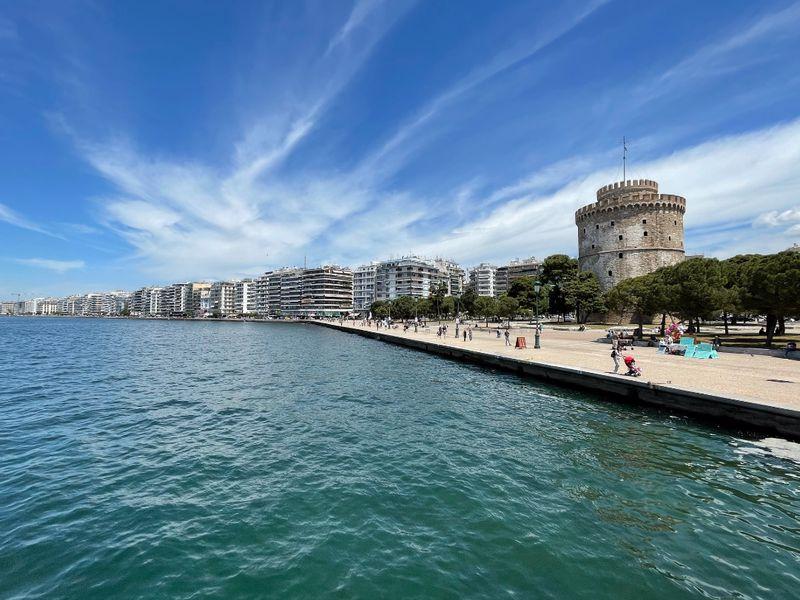
If this article seemed interesting or contributed to your quality information, then you can like my facebook page: o_thessalonikios or follow me on instagram!
Mouzakidis Pantelis







